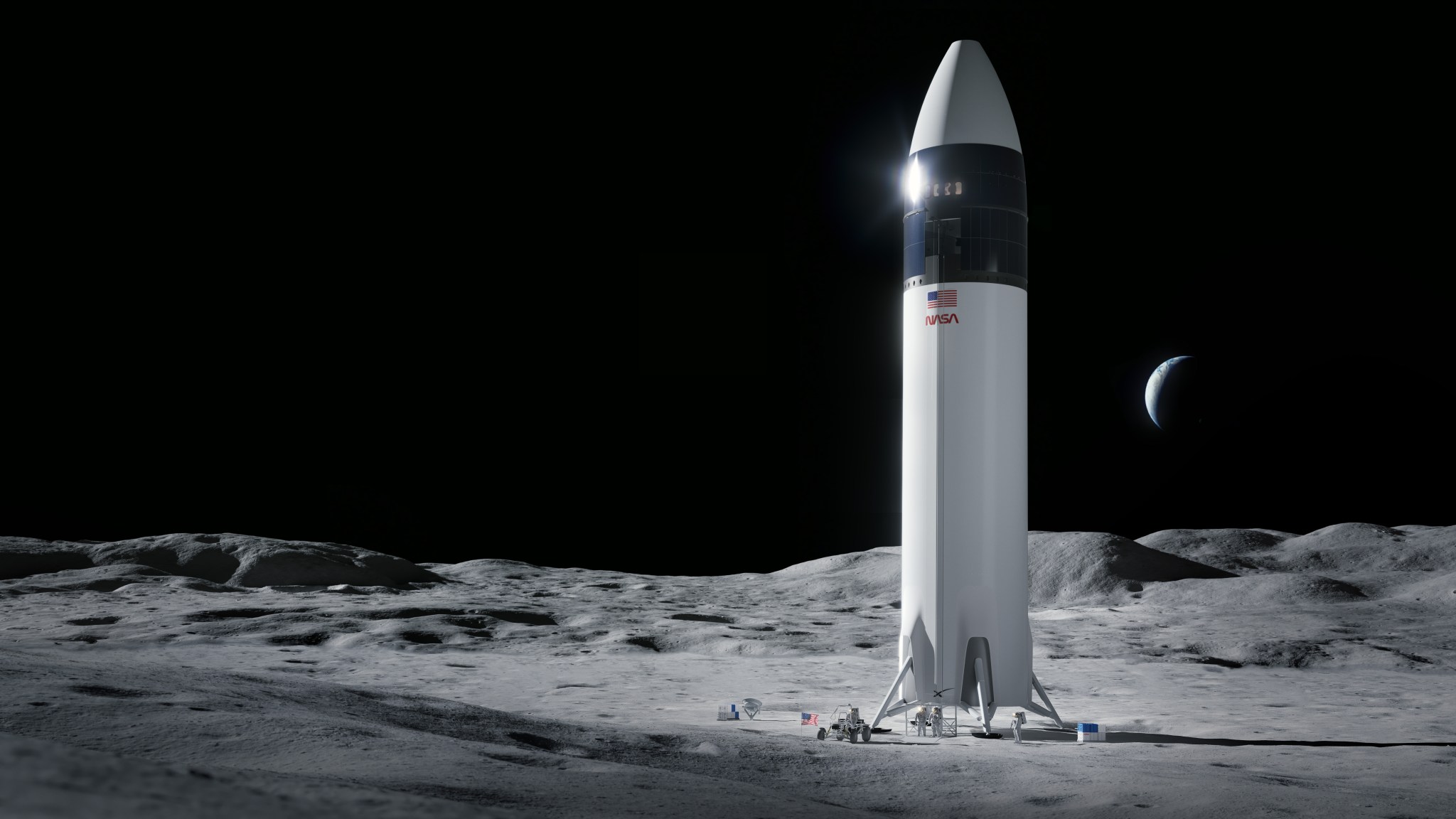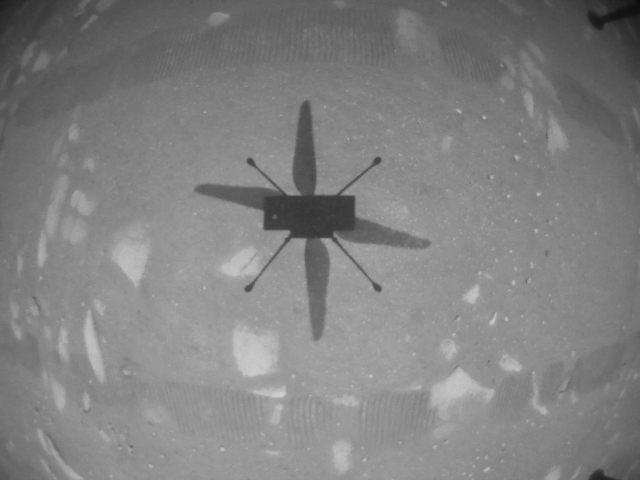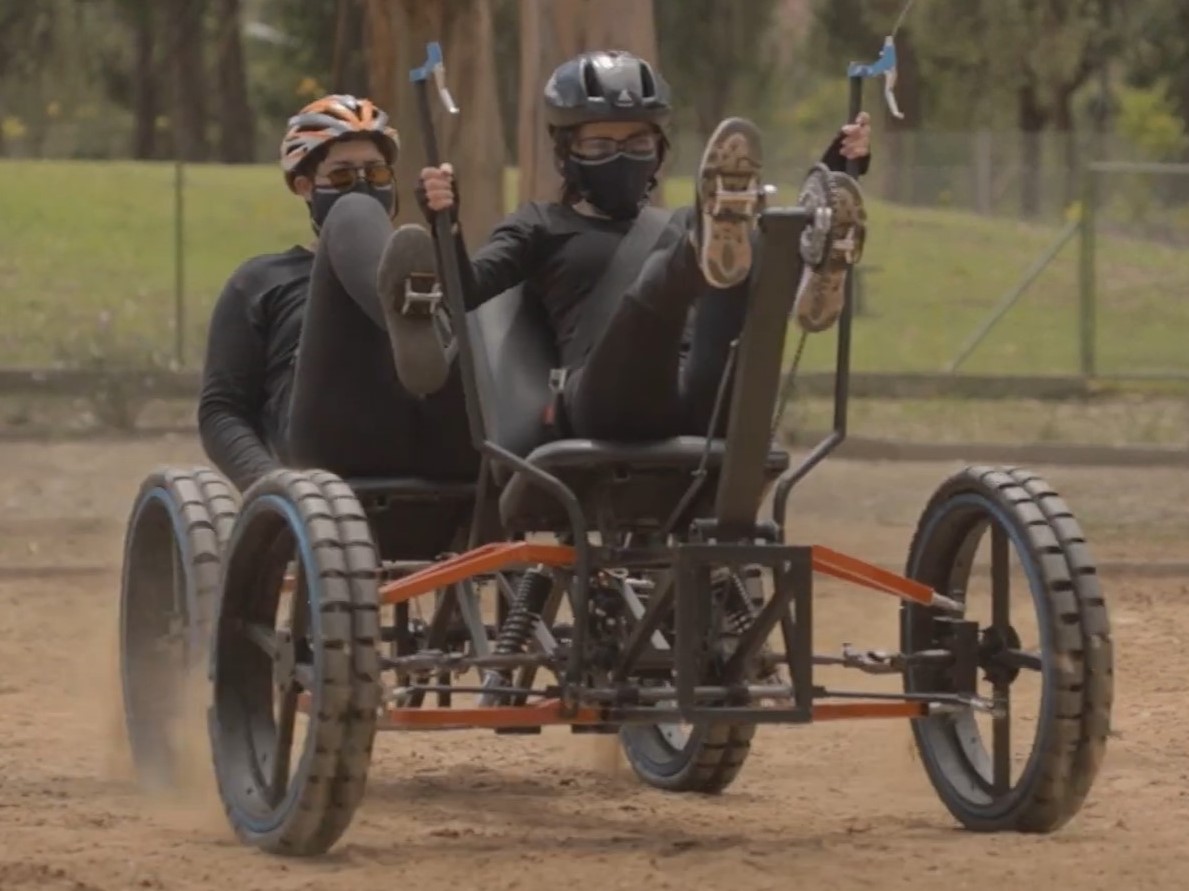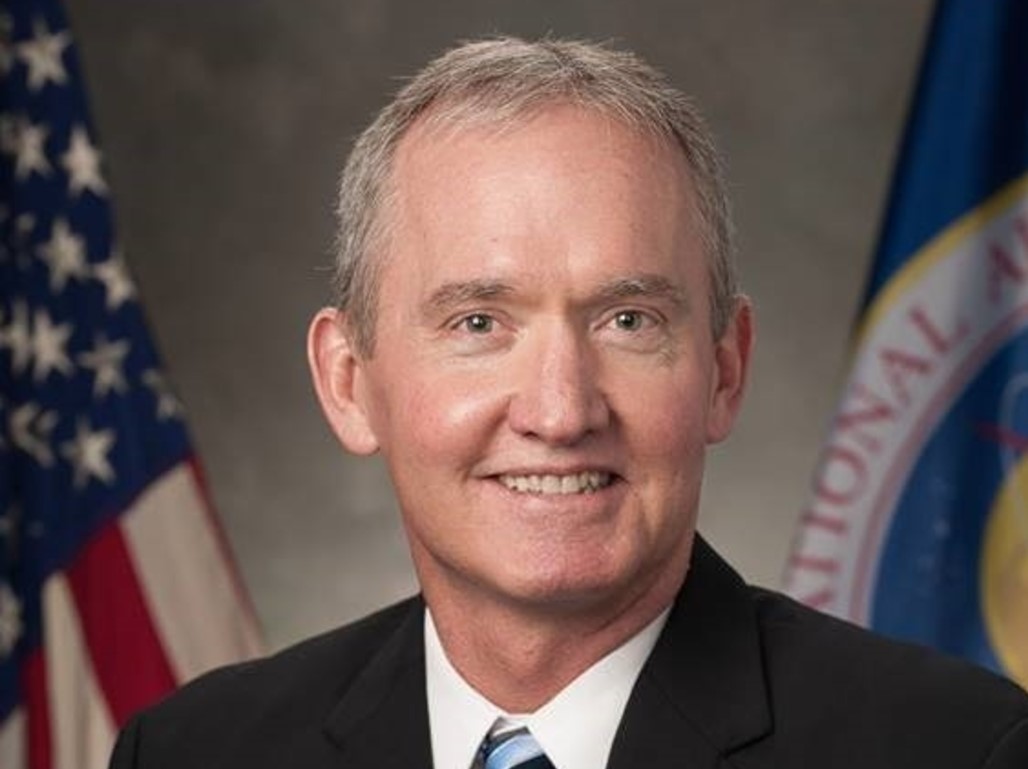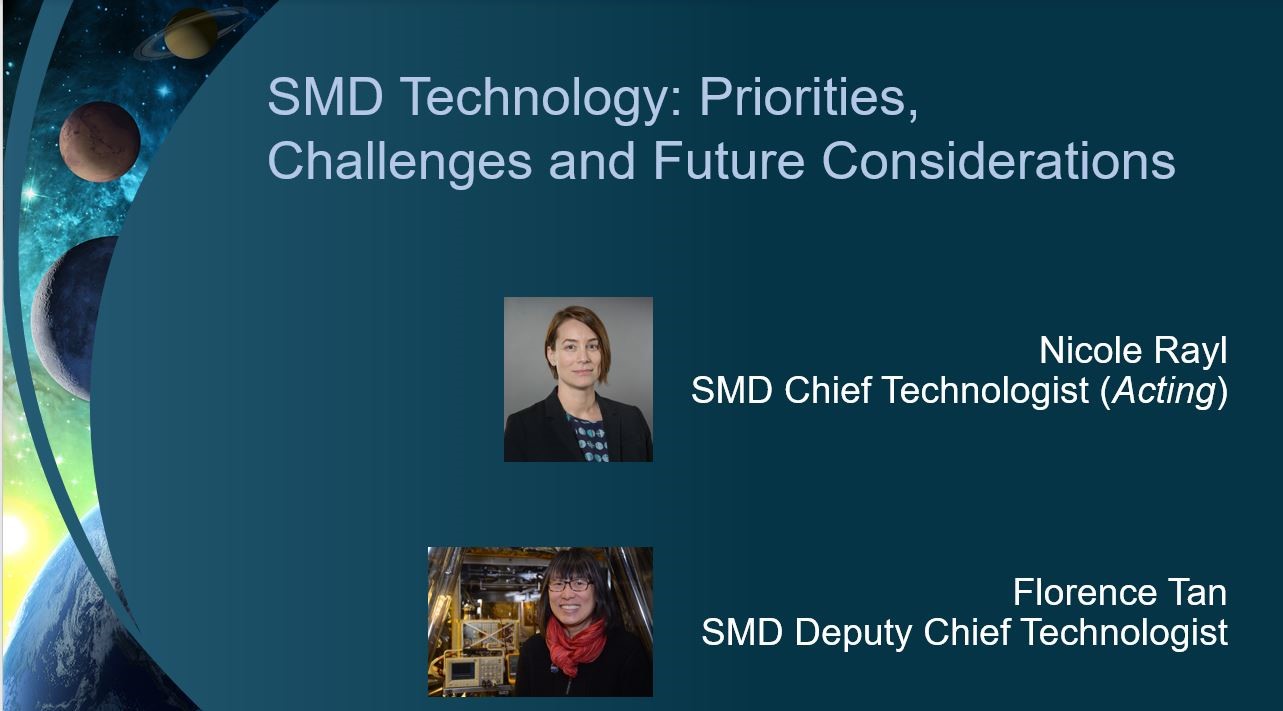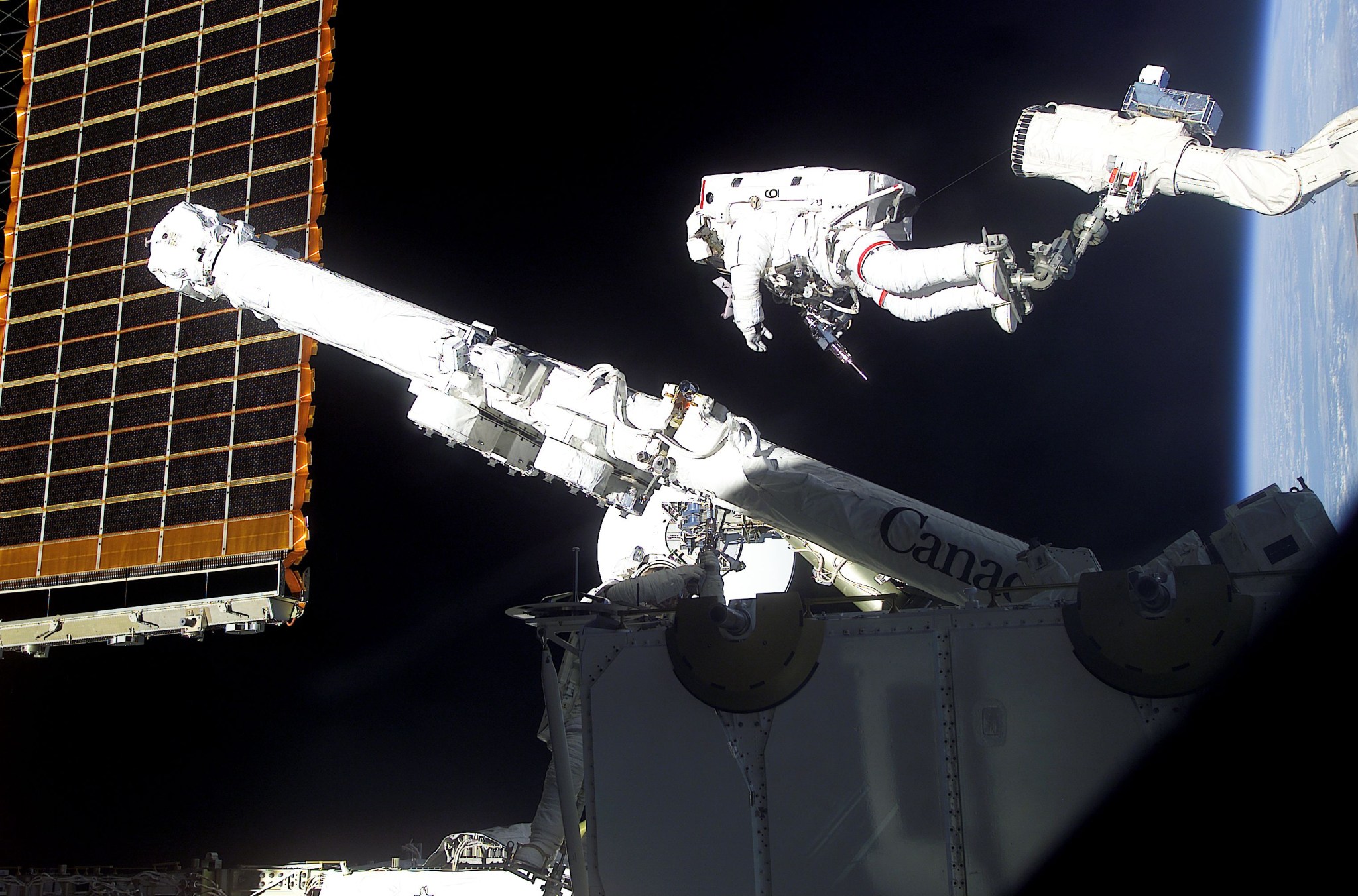As Artemis Moves Forward, NASA Picks SpaceX to Land Next Americans on Moon
NASA is getting ready to send astronauts to explore more of the Moon as part of the Artemis program, and the agency has selected SpaceX to continue development of the first commercial human lander that will safely carry the next two American astronauts to the lunar surface. At least one of those astronauts will make history as the first woman on the Moon. Another goal of the Artemis program includes landing the first person of color on the lunar surface.
The agency’s powerful Space Launch System rocket will launch four astronauts aboard the Orion spacecraft for their multiday journey to lunar orbit. There, two crew members will transfer to the SpaceX human landing system for the final leg of their journey to the surface of the Moon. After approximately a week exploring the surface, they will board the lander for their short trip back to orbit where they will return to Orion and their colleagues before heading back to Earth.
The firm-fixed price, milestone-based contract total award value is $2.89 billion.
“With this award, NASA and our partners will complete the first crewed demonstration mission to the surface of the Moon in the 21st century as the agency takes a step forward for women’s equality and long-term deep space exploration,” said Kathy Lueders, NASA’s associate administrator for Human Explorations and Operations Mission Directorate. “This critical step puts humanity on a path to sustainable lunar exploration and keeps our eyes on missions farther into the solar system, including Mars.”
SpaceX has been working closely with NASA experts during the HLS base period of performance to inform its lander design and ensure it meets NASA’s performance requirements and human spaceflight standards. A key tenet for safe systems, these agreed-upon standards range from areas of engineering, safety, health, and medical technical areas.
“This is an exciting time for NASA and especially the Artemis team,” said Lisa Watson-Morgan, program manager for HLS at NASA’s Marshall Space Flight Center. “During the Apollo program, we proved that it is possible to do the seemingly impossible: land humans on the Moon. By taking a collaborative approach in working with industry while leveraging NASA’s proven technical expertise and capabilities, we will return American astronauts to the Moon’s surface once again, this time to explore new areas for longer periods of time.”
SpaceX’s Starship, designed to land on the Moon, leans on the company’s tested Raptor engines and flight heritage of the Falcon and Dragon vehicles. Starship includes a spacious cabin and two airlocks for astronaut moonwalks. The Starship architecture is intended to evolve to a fully reusable launch and landing system designed for travel to the Moon, Mars, and other destinations.
“I am so proud of the hard work the team has put in, while working hand-in-hand with our commercial partners, to get to today’s milestone achievement,” Marshall Director Jody Singer said. “I can’t wait to make even more history together!”
The HLS award is made under the Next Space Technologies for Exploration Partnerships Appendix H Broad Agency Announcement.
In parallel with executing the Appendix H award, NASA intends to implement a competitive procurement for sustainable crewed lunar surface transportation services that will provide human access to the lunar surface using the Gateway lunar outpost on a regularly recurring basis beyond the initial crewed demonstration mission.
With NASA’s Space Launch System rocket, Orion spacecraft, HLS, and Gateway, NASA and its commercial and international partners are returning to the Moon for scientific discovery, economic benefits, and inspiration for a new generation. Working with its partners throughout the Artemis program, the agency will fine-tune precision landing technologies and develop new mobility capabilities to enable exploration of new regions of the Moon. On the surface, the agency has proposed building a new habitat and rovers, testing new power systems and more. These and other innovations and advancements made under the Artemis program will ensure that NASA and its partners are ready for human exploration’s next big step – the exploration of Mars.
For more information about the human landing system, visit here.
Lakiesha Hawkins Named Deputy Manager of Human Landing System Office
Lakiesha Hawkins has been named to the Senior Executive Service position of deputy manager of the Human Landing System Program Office at NASA’s Marshall Space Flight Center, pending approval by the agency’s Office of Personnel Management.
The Senior Executive Service is the personnel system covering top managerial positions in federal agencies. Hawkins will assist HLS Program Manager Lisa Watson-Morgan in leading the development of an integrated human lunar landing system, including elements such as the descent element, ascent element, and transfer vehicle for the Artemis program.
Since 2019, Hawkins has been manager of the HLS Program Office’s Program Planning and Control Office, and was responsible for leadership of the budget, risk, schedule, governance, cyber security, and audit aspects of lander development efforts. From 2018 to 2019, she was deputy manager of the Habitation Systems Development Office, providing program and project leadership for the Gateway Habitation Element. In 2017, she was chief of the Avionics Systems Integration Branch, where she managed systems engineers leading avionics software and hardware integration for the Space Launch System.
In 2016, Hawkins accepted a temporary assignment at NASA Headquarters in the Human Exploration and Operations Mission Directorate, where she developed an in-space transportation strategic plan to inform the Agency Planning Programming Budgeting and Execution 19 process. Additionally, she provided critical support to the Mars Study Capability Team, Future Capabilities Team, and NextSTEP Broad Area Announcement Team.
As team lead for propulsion dynamic loads and data analysis from 2012 to 2016, Hawkins provided leadership and technical direction to the Structural and Dynamic Analysis Branch, giving day-to-day guidance in structural dynamics, system loads, rotordynamics, data acquisition and analysis, vibroacoustics, and shock. Hawkins began her NASA career at Marshall in 2010 as a lead systems engineer for the J-2X engine fuel turbopump development and a technical expert in liquid engine component and systems development.
Prior to joining NASA, Hawkins worked in private industry supporting development of turbomachinery for the Space Shuttle Main Engine and leading technical integration efforts to resolve turbopump issues for the Ares Upper Stage J-2X engine.
Hawkins holds a bachelor’s degree in mechanical engineering from Florida Agricultural and Mechanical University in Tallahassee and a master’s degree in engineering management from the University of South Florida in Tampa. She was awarded a NASA Outstanding Leadership Medal in 2017 and was honored as a Distinguished Alumni by the Florida A&M University-Florida State University College of Engineering Department of Mechanical Engineering in 2018.
A native of Baton Rouge, Louisiana, Hawkins and her husband, John Jr., live in Madison, Alabama, with their daughter, Shayla, and son, John III.
Ingenuity Mars Helicopter Succeeds in Historic First Flight
On April 19, NASA’s Ingenuity Mars Helicopter became the first aircraft in history to make a powered, controlled flight on another planet. The Ingenuity team at the agency’s Jet Propulsion Laboratory confirmed the flight succeeded after receiving data from the helicopter via NASA’s Perseverance Mars rover at 5:46 a.m. CDT.
“Ingenuity is the latest in a long and storied tradition of NASA projects achieving a space exploration goal once thought impossible,” said acting NASA Administrator Steve Jurczyk. “The X-15 was a pathfinder for the space shuttle. Mars Pathfinder and its Sojourner rover did the same for three generations of Mars rovers. We don’t know exactly where Ingenuity will lead us, but today’s results indicate the sky – at least on Mars – may not be the limit.”
The solar-powered helicopter first became airborne at 2:34 a.m. CDT – 12:33 Local Mean Solar Time (Mars time) – a time the Ingenuity team determined would have optimal energy and flight conditions. Altimeter data indicate Ingenuity climbed to its prescribed maximum altitude of 10 feet and maintained a stable hover for 30 seconds. It then descended, touching back down on the surface of Mars after logging a total of 39.1 seconds of flight. Additional details on the test are expected in upcoming downlinks.
Ingenuity’s initial flight demonstration was autonomous – piloted by onboard guidance, navigation, and control systems running algorithms developed by the team at JPL. Because data must be sent to and returned from the Red Planet over hundreds of millions of miles using orbiting satellites and NASA’s Deep Space Network, Ingenuity cannot be flown with a joystick, and its flight was not observable from Earth in real time.
NASA Associate Administrator for Science Thomas Zurbuchen announced the name for the Martian airfield on which the flight took place.
“Now, 117 years after the Wright brothers succeeded in making the first flight on our planet, NASA’s Ingenuity helicopter has succeeded in performing this amazing feat on another world,” Zurbuchen said. “While these two iconic moments in aviation history may be separated by time and 173 million miles of space, they now will forever be linked. As an homage to the two innovative bicycle makers from Dayton, this first of many airfields on other worlds will now be known as Wright Brothers Field, in recognition of the ingenuity and innovation that continue to propel exploration.”
Ingenuity’s chief pilot, Håvard Grip, announced that the International Civil Aviation Organization – the United Nations’ civil aviation agency – presented NASA and the Federal Aviation Administration with official designator IGY, call-sign INGENUITY. The location of the flight has also been given the ceremonial location designation JZRO for Jezero Crater.
As one of NASA’s technology demonstration projects, the 19.3-inch-tall Ingenuity contains no science instruments inside its tissue-box-size fuselage. Instead, the 4-pound rotorcraft is intended to demonstrate whether future exploration of the Red Planet could include an aerial perspective.
This first flight was full of unknowns. The Red Planet has a significantly lower gravity – one-third that of Earth’s – and an extremely thin atmosphere with only 1% the pressure at the surface compared to Earth. This means there are relatively few air molecules with which Ingenuity’s two 4-foot-wide rotor blades can interact to achieve flight. The helicopter contains unique components, as well as off-the-shelf-commercial parts – many from the smartphone industry – that were tested in deep space for the first time with this mission.
Parked about 211 feet away at Van Zyl Overlook during Ingenuity’s historic first flight, the Perseverance rover not only acted as a communications relay between the helicopter and Earth, but also chronicled the flight operations with its cameras. The pictures from the rover’s Mastcam-Z and Navcam imagers will provide additional data on the helicopter’s flight.
Perseverance touched down with Ingenuity attached to its belly on Feb. 18. Deployed to the surface of Jezero Crater on April 3, Ingenuity is currently on the 16th sol, or Martian day, of its 30-sol (31-Earth day) flight test window. Over the next three sols, the helicopter team will receive and analyze all data and imagery from the test and formulate a plan for the second experimental test flight, scheduled for no earlier than April 22. If the helicopter survives the second flight test, the Ingenuity team will consider how best to expand the flight profile.
For more information about Ingenuity, visit here and here.
NASA Announces Winners of 2021 Human Exploration Rover Challenge
By Will Bryan
High school and college students from the U.S. and around the world have spent the last eight months designing, building, and testing their creations for NASA’s 27th annual Human Exploration Rover Challenge – one of seven NASA Artemis Student Challenges. The winners were announced during a virtual awards ceremony April 16. Parish Episcopal School Team 1 of Dallas won the high school division, and Universidad Nacional de Colombia from Bogota, Colombia, won the college/university division.
The challenge tasks student teams to design, engineer, and test a human-powered rover on a course that simulates the terrain found on rocky bodies in the solar system. The teams also must perform mission tasks while negotiating the course, including sample retrievals and spectrographic analysis.
Despite the cancellation of on-site competition activities at the U.S. Space & Rocket Center near NASA’s Marshall Space Flight Center due to the global COVID-19 pandemic, the teams competed in multiple design, documentation, and presentation categories, and were recognized for their successful efforts.
“The challenges you faced with this competition go beyond anything we’ve seen before, from designing the wheels and mission tools to executing mission requirements like sample retrievals and deploying instruments,” Marshall Director Jody Singer said. “To all of the students who took on these tasks and participated in Rover Challenge, we salute you and congratulate you on your accomplishments.”
“The students really had to think outside the box to figure out how to develop these robust vehicles during a global pandemic,” said Miranda Fike, activity lead for the challenge at Marshall. “These members of the Artemis Generation rose to the occasion and delivered their reviews, presentations, designs, and videos without fail.”
Awards for all nine categories can be found here.
Overall Winners
- High School Division:
- 1st place: Parish Episcopal School Team 1, Dallas
- 2nd place: Stillwater Area High School, Stillwater, Minnesota
- 3rd place: Navonmesh Prasar Foundation, Bhubaneswar Odisha, India
- College/University Division:
- 1st place: Universidad Nacional de Colombia, Bogota, Colombia
- 2nd place: Tecnológico de Monterrey, Xochitepec, Mexico
- 3rd place: University of Alabama in Huntsville Team 1
The Human Exploration Rover Challenge is managed by Marshall’s Office of STEM Engagement. The competition reflects the goals of the Artemis program, which seeks to put the first woman and first person of color on the Moon. NASA’s Office of STEM Engagement uses challenges and competitions to further the agency’s goal of encouraging students to pursue degrees and careers in science, technology, engineering, and mathematics fields.
For more information about NASA’s Human Exploration Rover Challenge, visit here.
For more information about NASA’s Artemis Student Challenges, visit here.
Bryan, Manufacturing Technical Solutions employee, supports Marshall’s Office of Strategic Analysis & Communications.
Marshall, NASA Celebrate How We Are All #ConnectedbyEarth
NASA’s Marshall Space Flight Center and the nation’s space agency as a whole help the environment through a host of health, science, and technology benefits every day. From documenting Earth’s changing climate to creating green technologies, NASA helps people around the world live more sustainably and adapt to the planet’s changes.
Earth Day, held April 22, is an ideal chance for team members and families emerging from COVID-19 quarantine to reacquaint themselves with the natural world, said Malene McElroy, sustainability coordinator in Marshall’s Environmental Engineering & Occupational Health Office.
“Reconnect with favorite green places. Support local farms, nurseries, public parks, and outdoor hiking venues,” she said. “Earth Day offers a perfect opportunity to reflect on the world we share and what we need to do to better care for it – and for one another.”
To celebrate Earth Day this year, NASA is hosting a virtual celebration through April 24, featuring live presentations by NASA scientists, interactive chats with Earth science experts, and activities for visitors of all ages. Explore the connections between Earth’s atmosphere, water cycle, forests, cities, ice caps, and climate through videos and interactive science content, a kid-friendly fun zone, a scavenger hunt, and hundreds of downloadable resources. Some content also will be available in Spanish.
On April 22 at 10 a.m. CDT, NASA will host a live chat with Grammy-nominated singer-songwriter Shawn Mendes; astronauts Mike Hopkins, Victor Glover, Dr. Shannon Walker, and Mark Vande Hei of NASA; and Japanese astronaut Soichi Noguchi. Mendes will lead discussion about Earth Day, climate change, and how explorers study Earth from space. Participants will answer audience questions taken in advance. This event will air live on NASA Television, the NASA app, and the agency’s website.
At Marshall, Gary Jedlovec, chief of the Earth Science Branch, will lead a team of researchers in a live forum on severe weather, which will stream live at 11 a.m. via Microsoft Teams. Marshall also will announce the winners of its Earth Day photo contest on that date.
Both events will be recorded and available to watch anytime after the live presentations conclude. Visit Inside Marshall for updates.
NASA’s “Connected by Earth” forum, streaming theater, and activities site will be available through May. Registration is free and open to the public.
At noon on April 22, key NASA environmental leaders will take part in a panel to discuss NASA’s Earth science mission and climate research. Speakers will include Dr. Gavin Schmidt, NASA senior climate advisor; Dr. Karen St. Germain, director of the Earth Science Division; Dr. Jim Green, NASA’s chief scientist; Dr. Gioia Massa, project scientist at NASA’s Kennedy Space Center; and retired astronaut Ricky Arnold, who flew to the International Space Station in 2009 and 2018.
At 2 p.m. April 22, a new episode of NASA Science Live will address climate change, global temperature studies, and the rising global sea level. The periodic, interactive NASA educational forum is recorded live and can be viewed on NASA Television, YouTube, Facebook, or the agency’s web presence.
NASA also invites members of the public to post photos to social media of their favorite local nature site or landmark, and to use the hashtag #ConnectedbyEarth – creating a connected tapestry of Earth images curated by the humans who inhabit and share it.
The agency also is encouraging workers and members of the public to start a home garden – be it in a plot of Earth or a pot full of Earth – using seeds similar to those grown on the International Space Station, such as romaine lettuce, radishes, mustard, and more. Participants are encouraged to share photos of their home gardens on social media using the hashtag #GrowForLaunch.
More structured gardening activities are on offer at Growing Beyond Earth, a classroom-based citizen science project sponsored by NASA and Fairchild Gardens of Coral Gables, Florida. More than 250 middle and high school classes around the United States are participating in these experiments, inspired by the International Space Station Veggie program.
With spring weather on the way, McElroy also encouraged team members to get involved with Marshall’s on-site pollinator habitat – a volunteer-maintained garden of more than 160 plants, carefully cultivated to help local populations of bees, butterflies, and other pollinating insects thrive.
“When the pandemic forced many of us to work from home, a number of people used the opportunity to take up gardening,” McElroy said. “It’s hands-on work, and maybe it caused us to slow down a little bit and take stock of our fragile, beautiful world. There’s no better time to remind ourselves of that – and to do our part to help take care of all we have.”
Building on NASA’s “Connected by Earth” theme, Marshall’s Earth Day event theme is “Restore Our Earth: What Can YOU Do?” Marshall’s severe weather forum and photo contest are organized by NASA’s Short-term Prediction Research and Transition Center and Marshall’s Environmental Engineering and Occupational Health Office, respectively.
Space Explorers: The ISS Experience, Now Open at US Space & Rocket Center
The first episode of Space Explorers: The ISS Experience, titled “ADAPT,” is now open at the U.S. Space & Rocket Center. Showtimes are 11 a.m. and 3 p.m. Tuesday-Saturday, and noon and 3 p.m. Sunday in the National Geographic Theater. Seating is limited due to social distancing measures
Tickets cost $8. Cost for NASA civil servants, their spouses, and dependent children ages 13-17 is $5; children ages 5-12 are $4. The badge holder must be present.
Billed as the largest production ever filmed in space, Space Explorers: The ISS Experience is a four-part immersive series that invites viewers to join eight astronauts on missions aboard the International Space Station. Filmed over two years, the film provides an intimate glimpse into the joy, wonder, and thrills of life in orbit.
The ISS Experience began to take shape in late 2018. The Marshall piece of the effort was spearheaded by Payload Operations Director Christy Robertson and an experienced Payload Operations Integration Center team that was selected from various disciplines. Other team members instrumental in the film’s development included: Nick Kopp, a payload operations director; Austin Lee and Bailey Young, payload operations safety officers; Monica Paceley, payload activity requirements coordinator; and Adam Thurmond, operations controller.
“Ultimately, the entire POIC team at Marshall can share in the success of this project as it has required untold hours of support from nearly everyone across every team within payload operations at one time or another,” Robertson said.
The payload operations team worked closely with filmmakers Felix & Paul Studios of Montreal, Canada, and payload developer Nanoracks of Houston. The studio and developer collaborated on the modified Z-CAM virtual reality 360 camera hardware that flew to the space station.
The payload operations team helped develop the concept of operations for how filming would be accomplished aboard the station. That included writing filming procedures, planning over 100 recording sessions that spanned nearly every station module, and supporting the real-time execution of filming in conjunction with various Flight Control Team counterparts at NASA’s Johnson Space Center, the European Space Agency, the Japan Aerospace Exploration Agency, and Roscosmos.
Telescopes Unite in Unprecedented Observations of Famous Black Hole
In April 2019, scientists released the first image of a black hole in the galaxy M87 using the Event Horizon Telescope. However, that remarkable achievement was just the beginning of the science story to be told.
Data from 19 observatories are being released that promise to give unparalleled insight into this black hole and the system it powers, and to improve tests of Einstein’s General Theory of Relativity.
“We knew that the first direct image of a black hole would be groundbreaking,” said Kazuhiro Hada of the National Astronomical Observatory of Japan, a co-author of a new study being published in The Astrophysical Journal Letters to describe the large set of data. “But to get the most out of this remarkable image, we need to know everything we can about the black hole’s behavior at that time by observing over the entire electromagnetic spectrum.”
The immense gravitational pull of a supermassive black hole can power jets of particles that travel at almost the speed of light across vast distances. M87’s jets produce light spanning the entire electromagnetic spectrum, from radio waves to visible light to gamma rays. The intensity of light across this spectrum gives a different pattern for each black hole. Identifying this pattern gives crucial insight into a black hole’s properties – for example, its spin and energy output – but this is a challenge because the pattern changes with time.
Scientists compensated for this variability by coordinating observations with many of the world’s most powerful telescopes on the ground and in space, collecting light from across the spectrum. This is the largest simultaneous observing campaign ever undertaken on a supermassive black hole with jets.
The NASA telescopes involved in this observing campaign included the Chandra X-ray Observatory, Hubble Space Telescope, Neil Gehrels Swift Observatory, the Nuclear Spectroscopic Telescope Array, and the Fermi Gamma-ray Space Telescope.
Beginning with the Event Horizon Telescope’s now iconic image of M87, a new video takes viewers on a journey through the data from each telescope. The video shows data across many factors of 10 in scale, both of wavelengths of light and physical size.
Each telescope delivers different information about the behavior and impact of the 6.5-billion-solar-mass black hole at the center of M87, which is located about 55 million light-years from Earth.
“There are multiple groups revving up to see if their models are a match for these rich observations, and we’re excited to see the whole community use this public data set to help us better understand the deep links between black holes and their jets,” said co-author Daryl Haggard of McGill University in Montreal, Canada.
The data were collected by a team of 760 scientists and engineers from nearly 200 institutions, 32 countries or regions, using observatories funded by agencies and institutions around the globe. The observations were concentrated from the end of March to the middle of April 2017
The first results show that the intensity of electromagnetic radiation produced by material around M87’s supermassive black hole was the lowest that had ever been seen. This produced ideal conditions for studying the black hole, from regions close to the event horizon out to tens of thousands of light-years.
The combination of data from these telescopes, and current and future Event Horizon Telescope observations, will allow scientists to conduct important lines of investigation into some of astrophysics’ most significant and challenging fields of study. For example, scientists plan to use these data to improve tests of Einstein’s Theory of General Relativity. Currently, the main hurdles for these tests are uncertainties about the material rotating around the black hole and being blasted away in jets, in particular the properties that determine the emitted light.
A related question that is addressed by the study concerns the origin of energetic particles called “cosmic rays,” which continually bombard Earth from outer space. Their energies can be a million times higher than what can be produced in the most powerful accelerator on Earth, the Large Hadron Collider. The huge jets launched from black holes, like the ones shown in the new images, are thought to be the most likely source of the highest energy cosmic rays, but there are many questions about the details, including the precise locations where the particles get accelerated. Because cosmic rays produce light via their collisions, the highest-energy gamma rays can pinpoint this location, and the new study indicates that these gamma rays are likely not produced near the event horizon – at least not in 2017. A key to settling this debate will be comparison to the observations from 2018, and the new data being collected.
Red the entire story here.
The Astrophysical Journal Letter describing these results is available here.
Russ DeLoach, NASA Chief of Safety and Mission Assurance, to Deliver Mission Success is in Our Hands Lecture
Russ DeLoach, NASA chief of safety and mission assurance, will give a presentation via Webex at 11:30 a.m. April 28, as part of the Mission Success is in Our Hands virtual lecture series. He will share experiences and knowledge from his time working in NASA’s safety environment. DeLoach has spent more than 30 years with the agency to ensure safety remains the top focus. The Mission Success Is in Our Hands initiative is a campaign led by the Safety and Mission Assurance Directorate at NASA’s Marshall Space Flight Center and partner Jacobs Engineering of Huntsville that promotes and strengthens Marshall’s focus on mission, hardware, and crew safety. (NASA)
Science Mission Directorate Chief Technologists to Give Virtual Tech Talk
Nicole Rayl, acting chief technologist for NASA’s Science Mission Directorate, and Florence Tan, the directorate’s deputy chief technologist, will give a virtual Tech Talk at 1 p.m. April 22. They will discuss the directorate’s technology challenges and priorities, including technologies enabling the next great observatories and small spacecraft producing high-value science. The talk will be streamed via Webex; login information can be found here. The Tech Talk series is presented by the Marshall Center Chief Technologist’s Office. (NASA)
This Week in NASA History: Canadarm2 Installed on Space Station – April 22, 2001
This week in 2001, Canadarm2, launched aboard STS-100, was installed on the International Space Station. Here, Canadian Space Agency astronaut Chris Hadfield stands on one Canadian-built robot arm while working with Canadarm2. Today, the Payload Operations Integration Center at NASA’s Marshall Space Flight Center serves as “science central” for the space station, working 24/7, 365 days a year in support of the orbiting laboratory’s science experiments. After 20 years of continuous human presence, the space station remains the sole space-based proving ground and stepping stone toward achieving the goals of the Artemis program. The NASA History Program is responsible for generating, disseminating, and preserving NASA’s remarkable history and providing a comprehensive understanding of the institutional, cultural, social, political, economic, technological, and scientific aspects of NASA’s activities in aeronautics and space. For more pictures like this one and to connect to NASA’s history, visit the Marshall History Program’s webpage. (NASA)


























